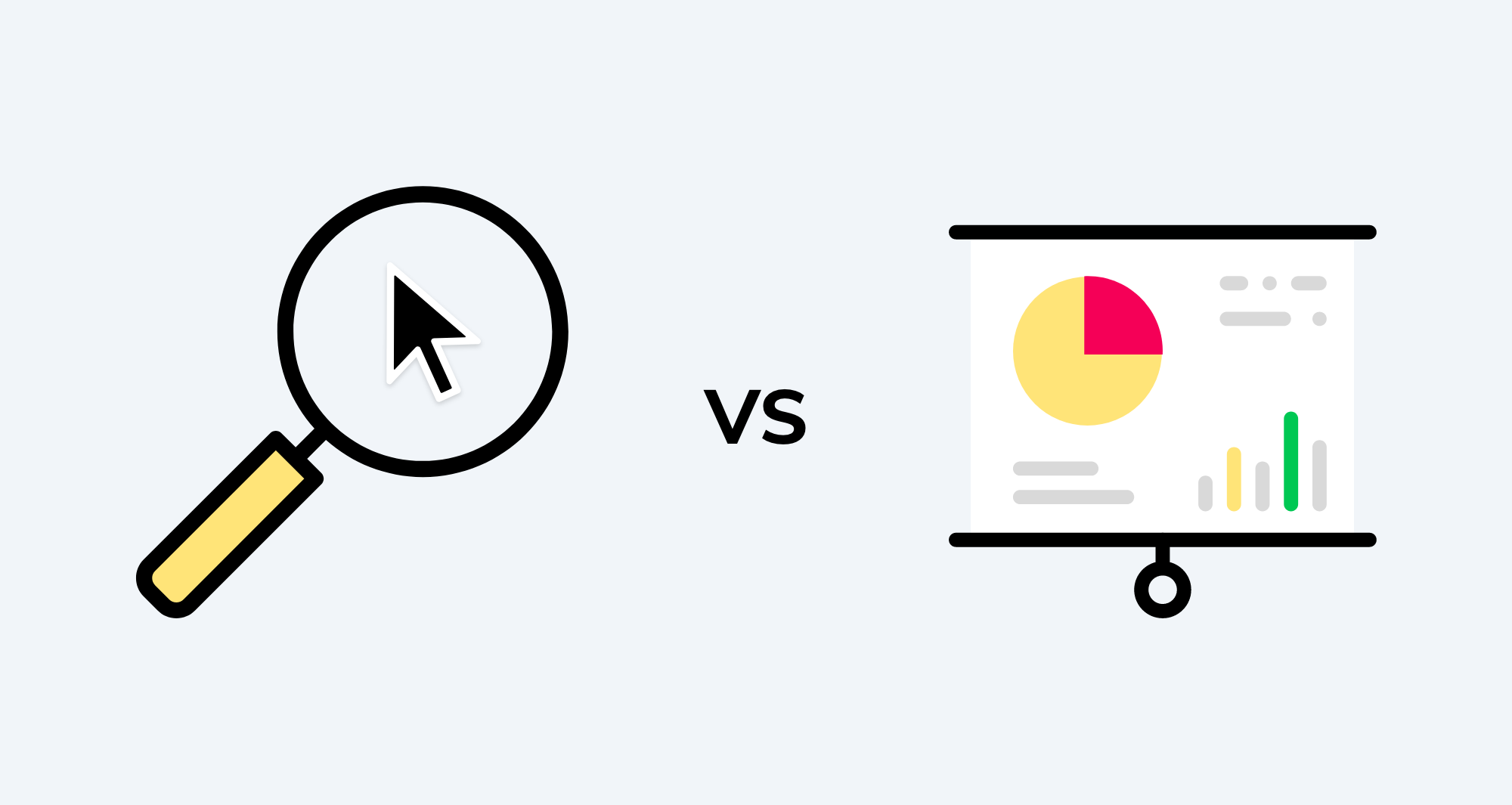What is UX Research? Methods used by and expert UX company
The success of a product/service has always depended on how its consumers perceive it.
Tonic3 develops and executes strategies that drive profit through Digital Transformation. Practically that means we are built to help clients hone the right strategy, implement the right technology, and build the right long-term capabilities to deliver lasting transformation.
Industries
We believe that effective technology helps people succeed in their daily lives. So we help our clients engineer useful technology for their clients, partners, and employees. That translates to every major industry, but over the years we’ve developed several core areas of expertise.
Quantitative research is designed to collect data points in a numerical form. Qualitative research lean more on the observation and collection of non-numerical insights such as opinions and motivations.
Essentially, quantitative research gives you hard data, while qualitative helps you explore more in-depth ideas.
Qualitative include research methods like open ended customer surveys. You can learn about the most common pain points of your buyers or which product features are most interesting to them.
But not all sources of research are quantitative or qualitative. Some of them will give you both quantitative questions (e.g., how likely are they to recommend your product on a 0 to 10 scale) and qualitative questions (e.g., what is the reason for their score).
Need UX Research? Let us help you and show you how you can implement UX Research in your company!
Qualitative data are not statistical and generally are not structured or semi-structured. These data are not necessarily mediated by real numbers used to develop graphics and tables.
In this case, it will be categorized on the basis of properties, attributes, roots and other identifiers.
Qualitative data can be used to make "what". It is investigative and frequently indefinite that new pesquisas sejam factas.
A collection of these data is based on qualitative research and is used for theories, interpretations, development of hypotheses and initial discoveries.
When we talk about qualitative data, we are talking about the properties of a specific object.
Qualitative data is obtained through qualitative analysis of detailed information on the relevant topic.
With a bookshelf, there are many ways to obtain different qualitative information from different observers. If someone does not have specific details about the bookshelf, he can assume that it is made of teak, not oak, and that it has a rough, smooth surface.
Similarly, we can also discuss what kind of oak it is made of or what part of Italy it comes from.
Therefore, qualitative data identifiers can be subjective, making qualitative data analysis a complex process with numerous possibilities and structures.
Unlike qualitative data, quantitative data are statistical and are usually structured, which means that they are more rigid and defined. This type of data is measured by numbers and values, making it a more suitable candidate for data analysis.
Although qualitative research is possible, quantitative data is much more concise and close. It can be used to ask the questions "how much" or "how much", followed by crucial information.
Quantitative data can be divided into additional subcategories. These categories are called discrete and continuous data.
Discrete data is just data that cannot be divided into smaller parts. This type of data consists of integers (positive and negative numbers such as -100, 10, 100 and so on) and is finite (i.e. it reaches the limit).
Continuous data is data that can be divided infinitely into smaller parts or data that is constantly changing.
A few examples of continuous data would be your train speed in the morning, time, weight and age required to write an article.
Research is the pilar of testing. which supports six and seven figure business decisions like UX choices for major site relaunches and copy choices for million-dollar ad campaigns.
There are three primary use cases:

Conversion optimization is about much more than random site changes such as button colour change, improve call to action, etc.
It’s about doing the research to understand what your customers need, what makes them hesitate, and what they think about your product and site experience.
Once you know the answers, you’ll have a better idea of what you should test. It means more tests will deliver better improvements, and you’ll make the highest value changes first.
Site redesigns are a huge risk. By spending years making minor changes, data backed changes to your site, you can quickly throw them away with a big redesign.
The difference between a major redesign and those small changes is known as a ‘radical’ versus ‘iterative’ redesign.
Still, there are some situations when redesign is necessary:
Research is essential to both approaches. It’s also the best way to protect your site during a radical redesign. Quantitative and qualitative data can help justify the design and copy choices that are most likely to make users happy (and make your company more money).
The purpose of user research does more than just organize your tests or guide a site redesign. Can help you understand how to segment your email subscribers, which blog topics you should write about, which product features to highlight, or the copy that’s most likely to earn clicks on Google Ads.
Need UX Research? Let us help you and show you how you can implement UX Research in your company!
SEO specialists are most familiar with the technical analysis of a site. The goal of technical analysis is to identify issues hard to find that negatively impact the user experience.
For example, during a technical analysis, you may find some pages are running slow because the image sizes are too large.
Or you may see that users of Android devices have a much higher bounce rate than users of Apple products.
The second component of quantitative research, digital analytics, also takes place (mainly) in Google Analytics. There are two goals:
Mouse tracking traces user movements on a website. Often, movements and interactions are layered on top of one another to create a map parts represent places with lots of activity; blue sections show areas that get ignored.
Qualitative research methods focus on qualitative data collection methods for the purpose of research and observation of the target group and drawing conclusions from the collected data.
This research method is more dependent on the subjective characteristics determined by qualitative approaches. These are some of the most commonly used qualitative research methods.
At the beginning of this article, I mentioned the danger of relying on opinion instead of research. While that’s true, an expert’s opinion still has value.
That’s what a heuristic analysis is: an experience-based assessment of your website run by an expert, based on an evaluation framework.
The focus research method is one of the most widely used qualitative research methods in data collection. A focus group consists of a certain number of respondents (5-10) who behave like a cluster.
You can send an online survey or questionnaire to a focus group to get their opinion or opinion on a specific topic and save their responses for quick data analysis.
Creating and managing focus groups can be a complex and costly process. It is used by companies that may want to launch a new product to research the market and gain insight into the needs, preferences, and behavioral traits of their target audience.
Ethnographic research involves the observation and examination of research topics in a specific geographical location.
This geographical location can extend from a small unit to a large country in the world.
Ethnographic research helps to study cultures, behaviors, trends and pain points in a natural environment. Again, this is a time-consuming and demanding research method and cannot be limited to a specific time period.
Open ended exit surveys can give information about what attracts customer to your website. Surveys are a huge tool to deserve more than a section of a blog post.
If you want to survey site users, you can run on-page surveys or exit surveys. On page surveys typically target a subset of pages. For example, you could ask blog visitors which topics they’d like to learn more about.
Exit surveys prompt users to finish a survey just before they leave your site.
Onsite surveys are best to gather smaller bits of qualitative research. If you want deeper feedback, you’ll need to conduct user interviews, send out a survey to email subscribers/customers, or pay for a research panel to push a survey to your target audience.
A case study is an in-depth analysis used primarily in the social and educational sciences. It can be done by any organization, large or small, to draw a detailed conclusion on a subject.
A case study is also one of the simplest, but most time-consuming, research methods that collect data from multiple sources.
The qualitative component of user testing is two-fold.
First, you can listen to users narrate their experience. User testing subjects are asked to 'think out loud' as they move through your website.
By getting access to their thoughts, you learn how they feel about particular elements and more about why something is easy or hard.
Additionally, you can give user testing subjects a post-task survey. It’s best to deliver the survey as quickly as possible before memory fades.
How to get buy-in for user research—no matter what kind you need to do? It’s not easy to get buy-in for UX research: it can slow down a site relaunch and require a decent chunk of change. That doesn’t make it less essential.
One of the strongest cases you can make for user research is how much money it saves.
Development resources are expensive. Conducting research before coding a site design makes it more likely that early decisions will be the right ones. Recoding large sections of the site is more expensive than upfront research.
You’re already spending money on CRO and ads. If you’re already spending thousands or millions to optimize or promote a site, shouldn’t you invest a few thousand dollars to give CRO and ad teams the research they need to spend those resources wisely?
Need UX Research? Let us help you and show you how you can implement UX Research in your company!

The success of a product/service has always depended on how its consumers perceive it.

User experience (UX) research is a critical component of digital product design. Whether you're launching a new app, website, or other digital...

In this article, we’ll explain what user research is and the three most common reasons for doing it—namely to create designs that are truly relevant...
